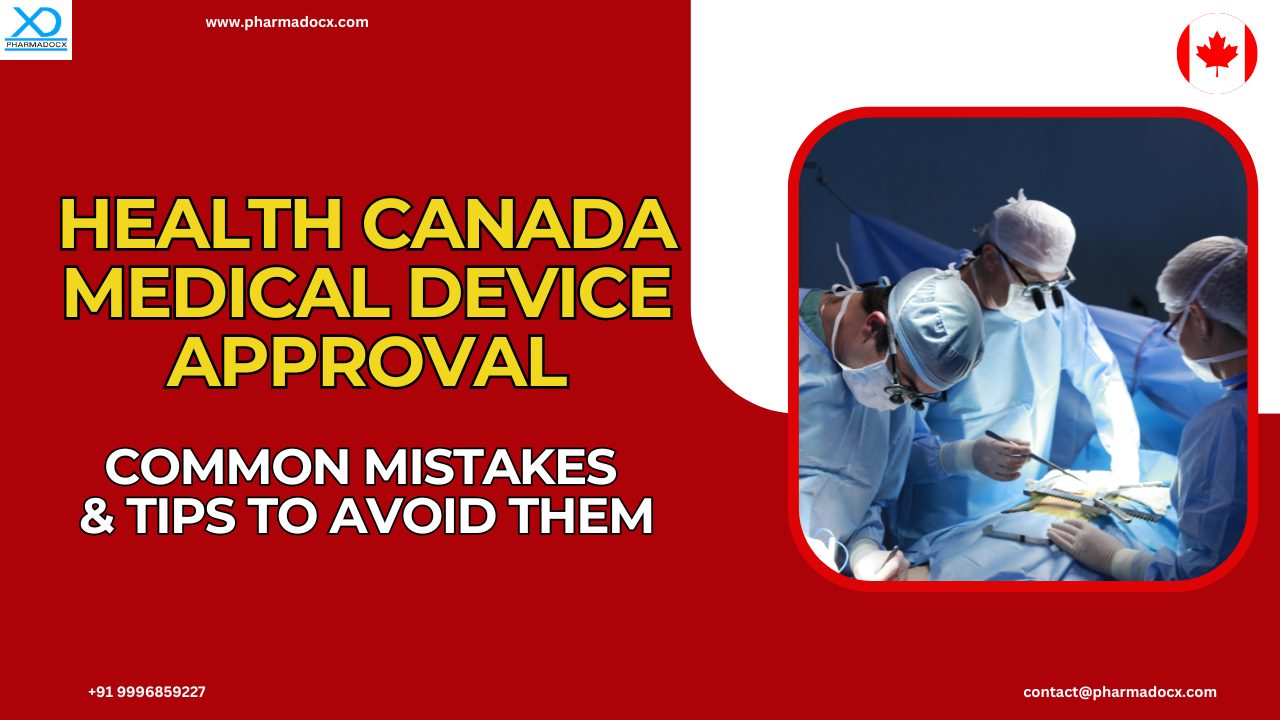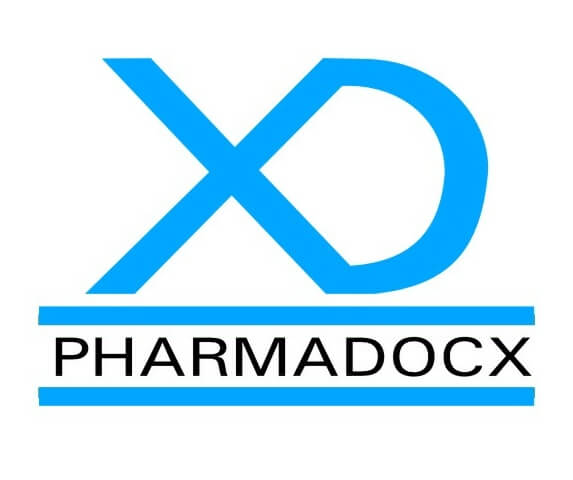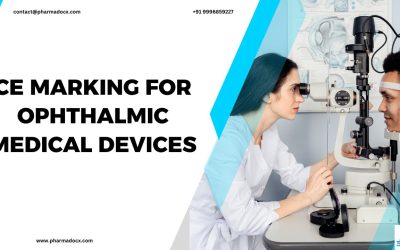If you are planning to sell medical devices in Canada, you will be required to mandatorily secure an approval. Navigating the Health Canada medical device regulations can be a cumbersome task. We have listed some of the mistakes encountered while securing the Health Canada medical device approval. Additionally, we have provided some tips to avoid these mistakes.
Health Canada medical device approval process: Step-by-step guide
- Determine the medical device class: Medical devices are categorised into Class I, II, III, and IV, based on risk level. The first and most important step in securing the Health Canada medical device approval is to determine the class to which your medical device belongs to. This will determine the license type and application pathway required.
- Apply for the right license type: Medical device establishment licence (MDEL) is required for Class I devices. On the other hand, medical device licence (MDL) is required for Class II, III, and IV devices. It is important to apply for the right license type based on your medical device class.
- Obtain required certifications: For MDL application, ISO 13485 certification under MDSAP is required. It is important to check the certificates required for your license type and secure them accordingly.
- Submit the application and pay the fees: Prepare the necessary documents and comply with guidelines applicable for the license. Additionally, pay the necessary fees. Submit the application to Health Canada.
- Application review and license grant: Health Canada regulatory officials will review the application and verify the documents. If all the criteria are fulfilled, then the officials will grant the license.
8 mistakes that can delay your Health Canada medical device approval: Tips to avoid them
1. Incorrect medical device classification
Medical devices in Canada are classified into four risk classes, namely, Class I, II, III, and IV. The Canada medical device classification system is based on the level of risk associated with intended use of the device. The classes are arranged in increasing order of risk level. The license type required will depend on the Health Canada medical device class. Class I medical devices require the medical device establishment licence (MDEL). On the other hand, Class II, III, and IV medical devices require the medical device licence (MDL). Correctly identifying the device class is vital for identifying the correct regulatory pathway for your medical device. Thus, incorrect device classification can lead to submission errors and unnecessary regulatory hurdles. Pro tip to avoid this common mistake when applying for Health Canada medical device approval:
- Conduct a thorough risk assessment of the device to correctly identify the device class. Check the Health Canada medical device classification system guidelines.
- Consult an experienced Health Canada regulatory consultant to correctly identify the device class.
2. Not complying with ISO 13485 certification requirements
For medical device licence (MDL) application, compliance with ISO 13485 certification requirements under MDSAP guidelines is mandatory. Thus, securing the ISO 13485 certification is mandatory for Class II, III, and IV medical devices in Canada. Not complying with MDSAP requirements and not having ISO 13485 certification can lead to license application rejection. Moreover, failing to meet these quality system requirements as per ISO 13485 certification guidelines can delay the approval or lead to non-compliance penalties. You can take the following measures to avoid non-compliance consequences:
- Ensure your manufacturing process and quality management system aligns with ISO 13485 standards.
- Secure the ISO 13485 certification before submitting your application for Health Canada medical device registration.
3. Incomplete or inaccurate documentation for Health Canada medical device approval
Health Canada requires comprehensive technical documentation, including device information, safety data, performance testing results, and labelling information. Incomplete documents, missing technical files, and incorrect labelling details can result in Health Canada medical device approval application rejection. Moreover, incomplete or inaccurate paperwork can result in delayed application review times. Our tips for your application are as follows:
- Double-check all required forms, clinical evaluations, technical files, safety data, and device labelling before submission.
- Take help of a professional Health Canada medical device document preparation service provider. We at Pharmadocx Consultants provide comprehensive document preparation service. Our team will prepare and compile your documents per Health Canada medical device guidelines.
4. Not meeting Health Canada medical device safety and effectiveness standards
Health Canada has formulated stringent regulations for medical devices entering its market. Compliance with Health Canada medical device regulatory guidelines is non-negotiable. Hence, devices not complying with Health Canada’s safety and performance regulations will not be granted the license. Our suggestion:
- Thoroughly review the latest Health Canada medical device regulatory guidelines.
- Have a checklist for the guidelines handy. You can refer to the checklist while finalising your application.
- Seek support from regulatory experts.
5. Medical device labelling guideline non-compliance
Medical devices must be labelled properly per Health Canada guidelines. It should clearly mention the specific safety warnings and usage instructions. Incorrect or incomplete labelling can result in regulatory setbacks and delays. Our tips for applicants are as follows:
- Properly review Canada’s medical device labelling guidelines, requirements, and those applicable to your device.
- Ensure proper compliance with medical device labelling guidelines applicable to your device before finalizing packaging of the device.
6. Poor communication with Health Canada
Health Canada may raise queries or request for additional information. Unclear or incomplete responses to regulatory inquiries from the authorities can prolong the review process. Delays in Health Canada medical device approval often occur when manufacturers fail to promptly address Health Canada’s queries or requests for additional information. Pro tips for smooth Health Canada medical device registration:
- Have a specialised team standby to handle all regulatory queries
- Tie up with a regulatory consultant who will act as a liaison between you and the regulatory officials. They will facilitate effective communication and ensure timely responses to all regulatory queries.
7. Ignoring post-market surveillance obligations
Health Canada requires manufacturers to monitor the safety and effectiveness of medical devices after they have been approved. Per license requirements, manufacturers must maintain records, report adverse events, and ensure ongoing compliance. Failing to establish a strong post-market surveillance system can lead to product recalls and even regulatory sanctions. You can use the following tips to meet post-market surveillance obligations:
- Maintain detailed post-market surveillance data to ensure continuous compliance with regulatory guidelines.
- Develop a robust adverse event reporting system for your medical devices in the market.
8. Overlooking regulatory procedures for modifications or changes in medical device
Any significant change to the medical device that may be related to the design, materials, indications, etc. may require a new approval or license amendment. Overlooking regulatory requirements for medical device modifications can be considered a non-conformity. A non-conformity can attract regulatory sanctions. We have listed some tips:
- Check whether the medical device modification requires a new approval or license amendment.
- Maintain detailed records of medical device changes.
Pharmadocx Consultants will help you easily obtain Health Canada medical device approval
Medical devices have an indispensable role in the healthcare industry. They have a pivotal role in diagnosis, monitoring, and treatment of patients. Hence, the healthcare delivered to the patient is considerably dependent on the effectiveness and quality of medical devices. Therefore, Health Canada strictly regulates all medical devices entering the Canadian healthcare system. The Canadian medical devices regulations aim to help protect the health and ensure safety of Canadians using the medical devices. Thus, you have to mandatorily secure the Health Canada medical device approval for launching your devices in Canada. We have listed some of the common mistakes encountered while applying for the Health Canada medical device registration. Our team will help you easily secure the necessary Health Canada medical device license and registration without any regulatory setback. Email at [email protected] or call/Whatsapp on 9996859227 to have a hassle-free Health Canada medical device registration journey.





